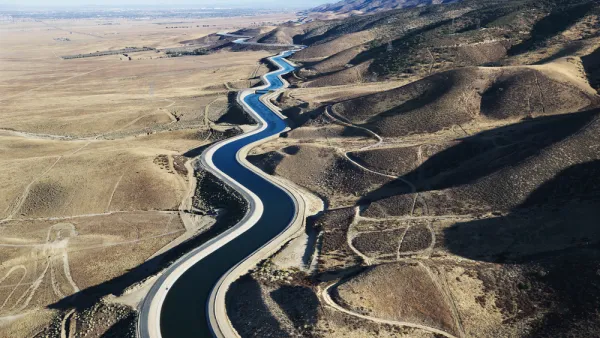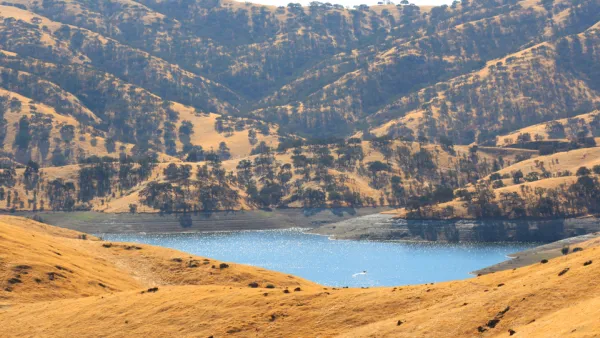A pair of recent stories explores the reemergence of California history, especially it’s gold rush history, as a result of falling water levels around the state.
A historically dry winter is robbing the west’s rivers and lakes of their normal, rejuvenating high winter and spring flows. As water levels drop lower and lower, land is revealed that reveals a prior era of California’s existence.
Richard Chang writes about how low river levels are revealing stretches of river bank that haven’t been mined in “decades, if not over a century.” The newly revealed river beds have sent many hobbyists down to the river to search for gold. So far, no one has struck it rich—except for the business owners selling mining equipment to gold-seeking prospectors.
Jim Carlton writes about the historic towns that have emerged from below shrinking reservoirs in states all over the West. In California, that means places built during the Gold Rush and later covered by the state’s water storage systems are seeing the light of day again for the first time in over 50 years. For instance, “man-made Folsom Lake has receded to less than one-fifth of its capacity amid bone-dry conditions in California, recently revealing outskirts of a ghost town called Mormon Island founded during the mid-19th century gold rush.” Like the prospectors scouring the state’s river beds for gold, the old re-emerged ghost towns have attracted their own scavengers: “On an unseasonably warm winter day recently, throngs of visitors descended on the cracked mud flats of the reservoir to inspect hand-forged nails, rusted hinges and other vestiges of frontier life that were inundated when the lake was created in 1955,” reports Carton.
The rediscovered places are not without their regulatory concerns: “One threat has come from treasure hunters wielding metal detectors, prompting the state agency to hurriedly adopt rules against their use.”
FULL STORY: Drought Provides Window to Old West

Analysis: Cybertruck Fatality Rate Far Exceeds That of Ford Pinto
The Tesla Cybertruck was recalled seven times last year.

National Parks Layoffs Will Cause Communities to Lose Billions
Thousands of essential park workers were laid off this week, just before the busy spring break season.

Retro-silient?: America’s First “Eco-burb,” The Woodlands Turns 50
A master-planned community north of Houston offers lessons on green infrastructure and resilient design, but falls short of its founder’s lofty affordability and walkability goals.

Test News Post 1
This is a summary

Analysis: Cybertruck Fatality Rate Far Exceeds That of Ford Pinto
The Tesla Cybertruck was recalled seven times last year.

Test News Headline 46
Test for the image on the front page.
Urban Design for Planners 1: Software Tools
This six-course series explores essential urban design concepts using open source software and equips planners with the tools they need to participate fully in the urban design process.
Planning for Universal Design
Learn the tools for implementing Universal Design in planning regulations.
EMC Planning Group, Inc.
Planetizen
Planetizen
Mpact (formerly Rail~Volution)
Great Falls Development Authority, Inc.
HUDs Office of Policy Development and Research
NYU Wagner Graduate School of Public Service




























